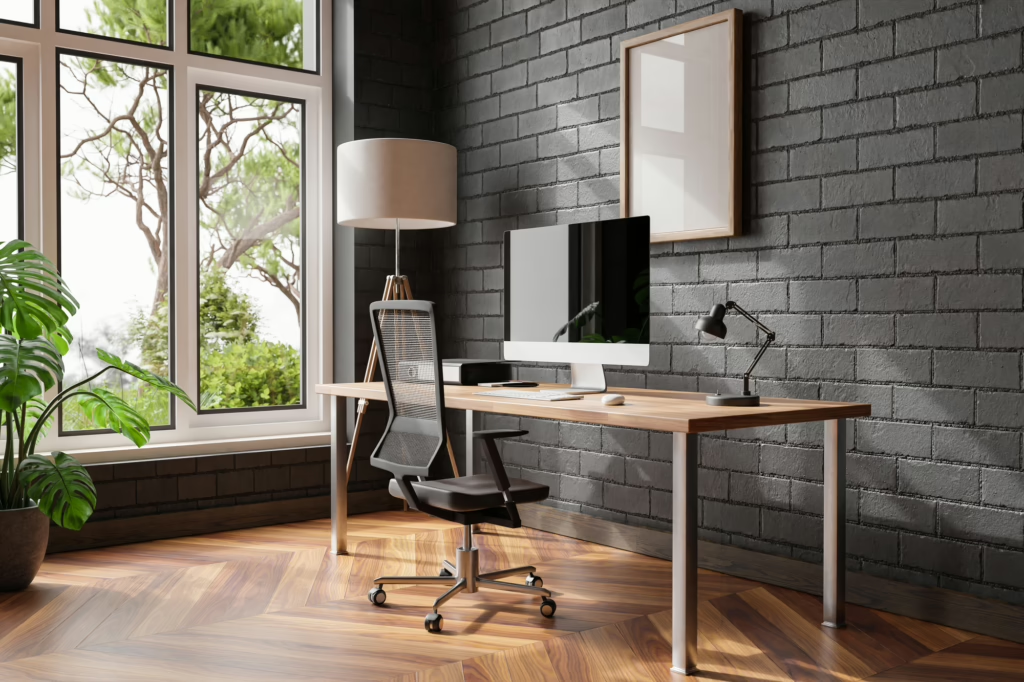.
Why Multi-Functional Spaces Are Trending
1. Remote Work Revolution
The shift to remote and hybrid work has created a need for home offices that double as family rooms, guest bedrooms, or creative studios. Multi-functional spaces allow individuals to maintain productivity while keeping their homes cohesive and comfortable.
2. Smaller Living Spaces
As urban areas grow and housing becomes more compact, multi-functional spaces maximize every square foot. They offer practicality without compromising style, making them essential for modern homes.
3. Flexible Lifestyles
Modern families require spaces that adapt to their evolving needs. From play areas for kids to workout zones for adults, multi-functional designs ensure that rooms remain useful as life circumstances change.
4. Multi-Generational Living
With more families embracing multi-generational living, homes are being reimagined to accommodate different age groups. This setup requires spaces that cater to grandparents, parents, and children alike, often combining living, sleeping, and recreational areas.
Designing Multi-Functional Spaces
Creating versatile spaces involves thoughtful planning and creative solutions. Here’s how to achieve functional yet stylish designs:
1. Smart Furniture Choices
Choose furniture that serves multiple purposes, such as sofa beds, expandable dining tables, or desks with built-in storage. For multi-generational households, consider modular furniture that can be rearranged to meet different needs.
Example: A sectional sofa with hidden storage can double as a guest bed while providing a place to store blankets and pillows.
2. Defined Zones
Use visual elements like rugs, shelving units, or paint colors to define separate areas within a single room. This technique works well in open-plan spaces, allowing each zone to serve a specific function.
Example: In a living room that also serves as a home office, use a bookshelf to divide the seating area from the workspace.
3. Efficient Storage Solutions
Hidden storage options keep spaces tidy and functional. Look for ottomans, under-bed storage, or built-in cabinets to maintain an organized environment.
Example: A storage bench in an entryway can hold shoes and bags while serving as a seating area.
4. Lighting Layers
Incorporate multiple types of lighting—task, ambient, and accent—to create versatile and mood-appropriate spaces. Adjustable lighting ensures each zone functions well, whether it’s for work, relaxation, or entertaining.
Example: Pendant lights over a dining table can create an intimate atmosphere, while a nearby floor lamp provides focused light for reading.
5. Flexible Room Dividers
For multi-generational households, privacy is key. Use folding screens, sliding doors, or curtain dividers to create temporary separation without permanent construction.
Example: A folding screen can convert a shared family room into a private guest space when needed.
6. Customizable Layouts
Design spaces that can easily adapt to changing needs. Modular furniture and moveable storage units allow for quick reconfigurations, ensuring the space evolves with your lifestyle.
Example: A playroom can transition into a teen hangout space by replacing toy storage with sleek shelving units.
Why Multi-Generational Living Demands Multi-Functional Spaces
Multi-generational homes bring unique challenges, such as accommodating varying preferences, privacy needs, and shared living areas. Multi-functional spaces solve these issues by:
- Providing private retreats for each family member.
- Offering shared areas that can transform based on activities, such as a dining room doubling as a homework station.
- Combining storage, seating, and sleeping solutions in smaller spaces.
Design Tip: Plan for the Future
When designing multi-functional spaces, consider how your needs might change. Opt for timeless designs and furniture pieces that can transition with your lifestyle.
Take Your Designs to the Next Level
Multi-functional spaces are the key to modern living. By designing rooms that adapt, you create homes that meet the needs of today’s families while staying stylish and functional.
Interested in pursuing a career in design? Check out The Academy of Home Staging and Design for accredited certification and courses in Home Staging and Interior Design. Download our course pamphlet today and Be Bold, Design Your Life!
For more tips and support to help you grow your Interior Design or Home Staging Business, join our private Facebook Group today The Interior Design/Home Staging Business Incubator.
Make 2025 the year you take your designs to the next level!
